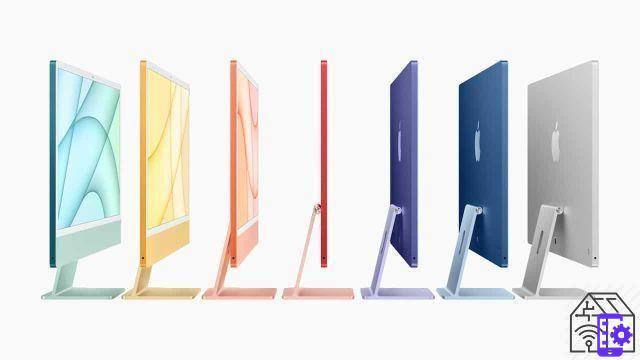
In our column "How has it changed" we retraced the very long history of everyday objects. From the washing machine to the hairdryer, from the coffee machine to the bathtub, and so on. Today, however, we have decided to face the evolution of a relatively recent object, which however has undergone great transformations year after year. We are talking aboutApple iMac, the computer that has revolutionized not only the history of the Cupertino company, but also that of the entire technology.
1984: when it all began
In general, the origin of Apple's iMac dates back to May 6, 1998, when the company first presented the product during the "Apple Back on Track" event. But what many do not know is that the origin of the computer dates back to at least fifteen years ago. In 1981, in fact, Steve Jobs began to work at the Macintosh division at the explicit request of CEO Michael Scott. His assignment was to optimize the design of Jef Raskin, who was working to build a small and inexpensive computer. For his part, Jobs worked carefully on the design and graphic interface, giving priority to the quality of the device rather than convenience.
A long job, which blew up the first marketing date of the Macintosh, set to 1983. In the meantime, in fact, IBM was conquering a large slice of the market in the sector and Jobs thought it best to optimize the computer to make it as competitive as possible. The device was then equipped with 128 KB in RAM and a 3 ″ ½ floppy disk made by Sony. And with these technical characteristics it was launched on the market on January 24, 1984. For the occasion, Apple announced the launch of the computer with a 60 second commercial directed by Ridley Scott, which changed the history of communication forever.
The commercial, inspired by George Orwell's novel "1984", was set in a dystopian future, in which a young girl frees humanity from the control of Big Brother. And as strange as it may seem, in Jobs's imagination this was the transposition of Apple's strength that was imposing itself on the market as a direct competitor of IBM. On the other hand, the Macintosh 128K it was a real revolution in the sector. In fact, this was the first computer to introduce an interface based on menus and icons, and to present as standard a keyboard and a mouse. But the real innovation introduced by Apple was the cutting-edge graphics, which proved to be the key to a success that has lasted for over twenty years.
1998: Apple's iMac arrives on the market
As you can imagine, the iMac story is closely related to that of Steve Jobs. After being away from Apple for 12 years, he returned to the company in 1996, earning the title of interim CEO. With the return of him, Jobs discovers the incredible talent of Jonathan Ive, a designer to whom he entrusts the design of a computer that embodies the soul of Apple. Thus was born theiMac G3. The device that revolutionized the IT industry forever, as well as having paved the way for the company's success. This was, in fact, the first computer all-in-one, that is a device that enclosed all the technical components within a single block.
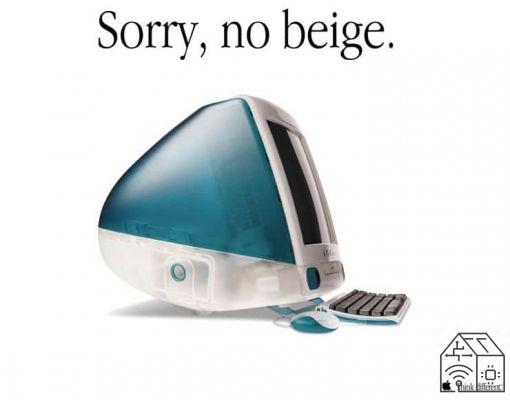
The entire computer hardware, in fact, was placed inside one body in colored transparent plastic, which allowed anyone to see where internal components were located. And this was just one of the many innovations introduced by Jobs and Ive. Given the limited space, the iMac G3 hit the market without floppy drive and serial ports, replaced if necessary by modern USB. Also, given the spasmodic attention to design, the computer was launched with a matching keyboard and mouse to the shade of the body. An important detail, which shows how Apple has always been attentive to the aesthetics of its products. Not surprisingly, Jobs himself declared that "the back of this computer is more beautiful than the front of those of the competition".
But the new Mac was not a revolution in design alone. For the first time, in fact, the company began to use the prefix i for its products. What the real meaning of this choice is is not clear, but it seems that the choice of the letter “i” can be traced back to the Internet as well as to the user's relationship with the device. Aware of the importance of the Internet, Apple decided to launch the computer by equipping it with a modem and an Ethernet port integrated as standard. In this way the users had the possibility to connect to the Net in a practical and fast way. As for the possibility that the "i" is to be understood as a substitute for the personal pronoun I, it must be said that the company has always tried to favor the user experience. And Apple may have chosen to represent the ease of use of its device in this way. Maybe.
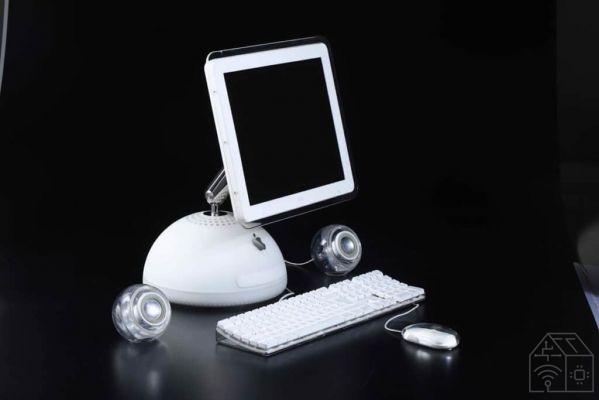
2002: the iMac G4 and the evolution of the Apple computer
From 1998 to today, Apple's iMac design has undergone all kinds of evolutions. Among the most important it is worth mentioning theiMac G4, the first model in which the CRT cathode tube screen was replaced by a modern one LCD display. A change that led to the redesign of the entire design. The various needs dictated that the hardware was integrated within a base, thus giving the computer the appearance of a desk lamp. And this was not the only major change. From this moment, in fact, the company was forced to abandon the colored body, which was brought back into production this year with theiMac 2021.
Equally interesting, as to the evolution of Apple's computer design, is the launch of the 2013 Mac Pro. The design is once again taken care of by Jonathan Ive, which this time proposes a black aluminum body shaped like a cylinder. An aesthetic never seen before in the sector, which was also accompanied by noteworthy technical features: Intel Xeon E5 quad, esa, octa and dodeca core processors, a RAM memory that could reach 64 GB and a double AMD FirePro graphics card . In short, Apple's iMac has evolved strongly over the decades, but without forgetting the details taken care of by Jobs in the first Macintosh of 1984: the design and graphics. Two features that have made this product successful.
Discount
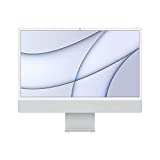 2021 Apple iMac (24", Chip Apple M1 con CPU 8-core...
2021 Apple iMac (24", Chip Apple M1 con CPU 8-core...
- Immersive 4.5 "24K Retina display with wide P3 color gamut and 500 nit brightness *
- Apple M1 chip with 8-core CPU and 8-core GPU for exceptional performance
- Brilliant colors and a very thin design: only 11.5 mm thick
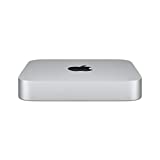 2020 Apple Mac mini with Apple M1 Chip (8GB RAM, 256GB SSD)
2020 Apple Mac mini with Apple M1 Chip (8GB RAM, 256GB SSD)
- Apple-designed M1 chip for a new level of CPU, GPU and machine learning performance
- 8-core CPU with up to 3x faster performance, to speed your workflows like never before
- 8-core GPU, for up to 6x faster graphics in the most complex apps and games




















![[Review] Samsung Powerbot VR7000: the robot vacuum cleaner from Star Wars](/images/posts/6bc44de38605b5c0fa12661febb1f8af-0.jpg)





